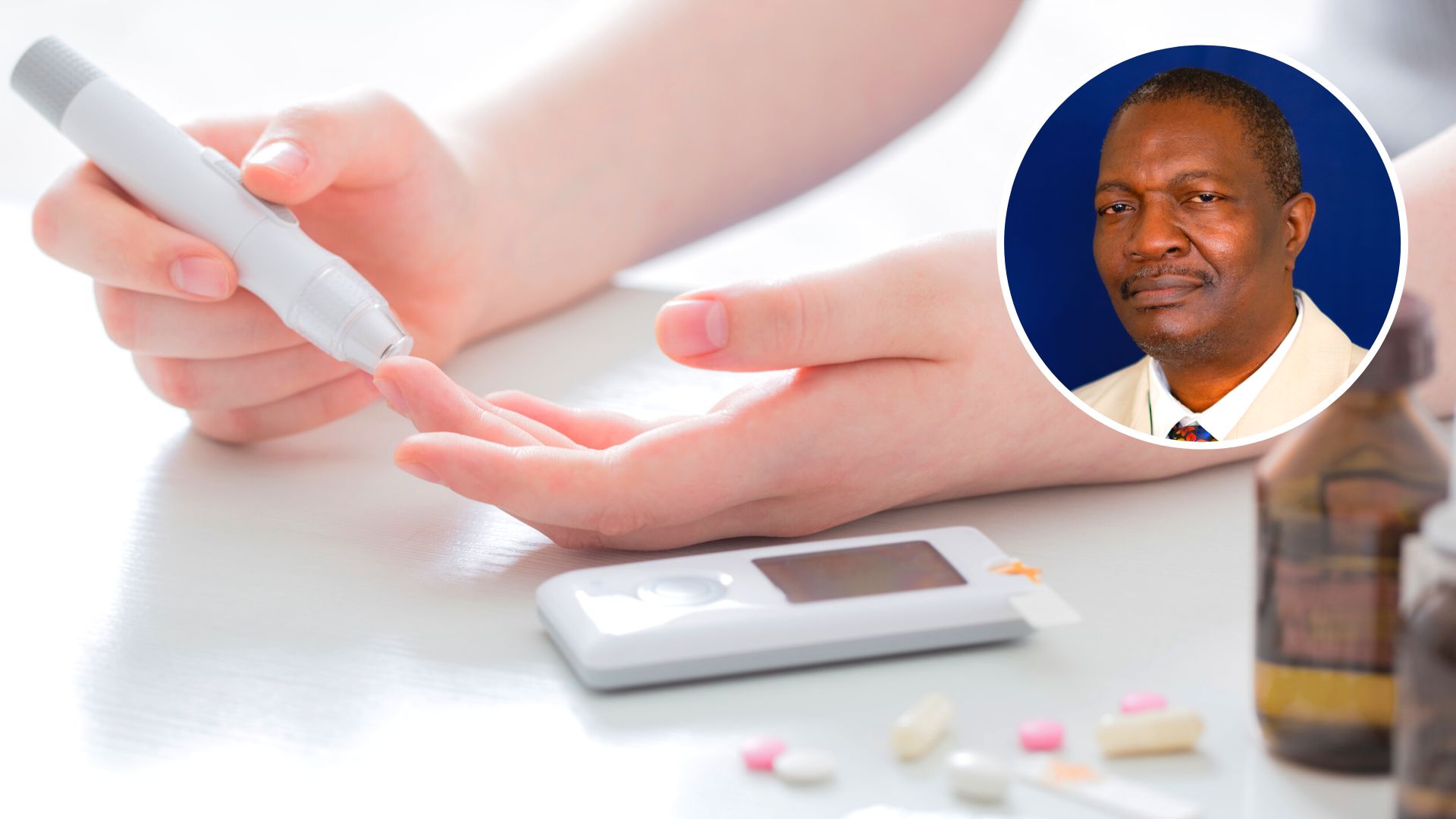- World Diabetes Day on Saturday 14 November has the theme ‘Nurses make the difference’
- Six million nurses are needed to specialise in diabetes care world-wide
- Charles Sturt University is involved in local and international diabetes research
With World Diabetes Day on Saturday 14 November, a Charles Sturt University medical scientist and public health epidemiologist said it is important to heed the warning by Diabetes Australia that ‘diabetes is the epidemic of the 21st century and the biggest challenge confronting Australia’s health system’.
Leader of the Charles Sturt diabetes research team and Lecturer Dr Ezekiel Nwose (pictured inset) in the School of Community Health in Orange said, “At Charles Sturt University, we are involved in both local and international diabetes research.
“This includes, but is not limited to, development and validation of clinical tools to monitor antiplatelet therapy in chronic disease treatment, disease management by diagnostic methods, and nutritional habits to promote dietary options or good food choices.”
Dr Nwose noted that both the International Diabetes Federation (IDF) and the World Health Organization (WHO) observe the 14th November every year as World Diabetes Day, and this year the theme is ‘Nurses make the difference’.
He said there are three important ‘facts and figures’, among many others:
- Six million nurses are needed world-wide and 60 per cent of this is relevant diabetes care
- About 50 per cent of adults living with diabetes are undiagnosed and thus unaware of it
- Over 75 per cent of people with diabetes live in urban areas and are of working age
“Perhaps the six million may appear a huge number of nurses needed, but this is probably an underestimation” Dr Nwose said.
“Australia has about 345,000 nurses, according to 2019 Health Workforce Data, but it indicated there may be a shortage of more than 120,000, or more than 30 per cent of the available nurses.
“Based on the Australian population, if this figure is extrapolated to the world, the nursing staff need by 2030 may actually be more than the projected number of six million.”
Therefore, this year’s awareness campaign focusses on:
- Governments: to increase funding for nursing education
- Health managers: to step up in sponsoring staff nurses on continuous professional development (CPD) in diabetes care
- Nurses: to recognise ‘Diabetes Education’ as a valid area of specialisation
- People living with diabetes: advance knowledge of diabetes self-management, including to appreciate relevance of peer-education and adherence to medical advice and lifestyle changes
- Family members of patients: advance knowledge of psychosocial support in diabetes self-management including cooperation in adjustments to family food choices and cooking options; also to check oneself because 50 per cent DM in adults are undiagnosed.
- School leavers/youth (job seekers): to recognise a nursing career as a valid choice to consider – six million nurses needed and nursing graduates need to increase by 8 per cent a year.
Learn about nursing courses at the Charles Sturt School of Nursing, Midwifery and Indigenous Health.
A spokesperson for the
Charles Sturt podiatry discipline said the University’s Podiatry
Clinic at the Community Engagement and Wellness Centre in Albury-Wodonga treated more than 10,000 patients, many with diabetes-related foot disease (DFD).
In 2017, the daily burden of DFD in Australia was estimated (Van Netten JJ et al) as:
- 300,000 people at-risk of developing DFD
- 50,000 people living with DFD
- 12,500 people living with a diabetes-related amputation
- 1,000 people in hospital because of DFD (27,600 hospitalisations each year)
- 12 people undergoing a diabetes-related amputation (4,400 amputations each year)
- 4 people dying because of DFD (1,700 deaths each year)
- $4 million spent directly managing DFD ($1.6 billion spent each year)






Social
Explore the world of social